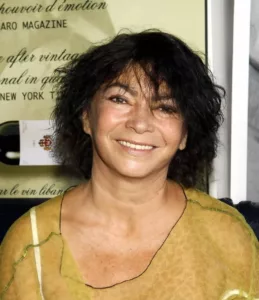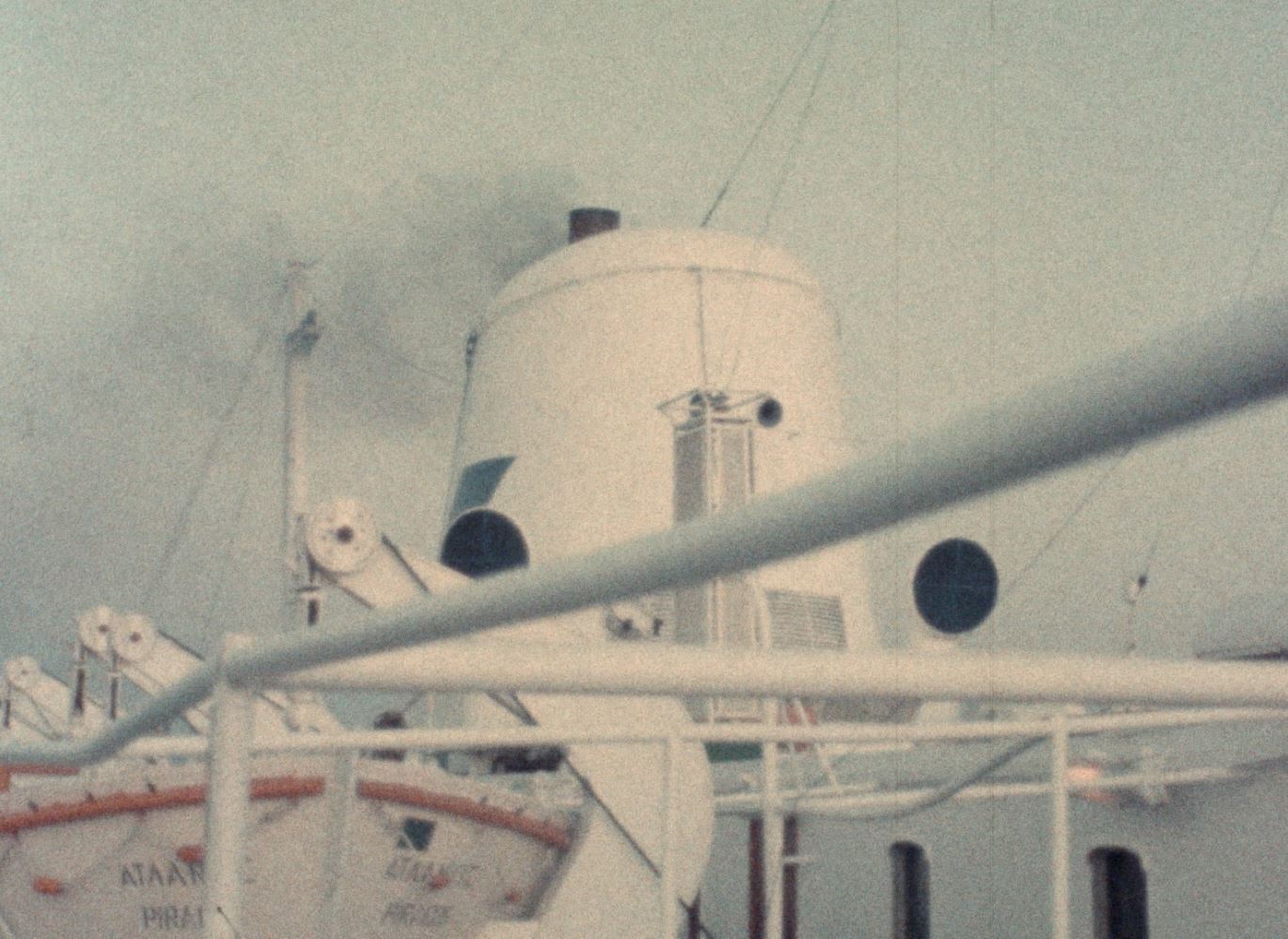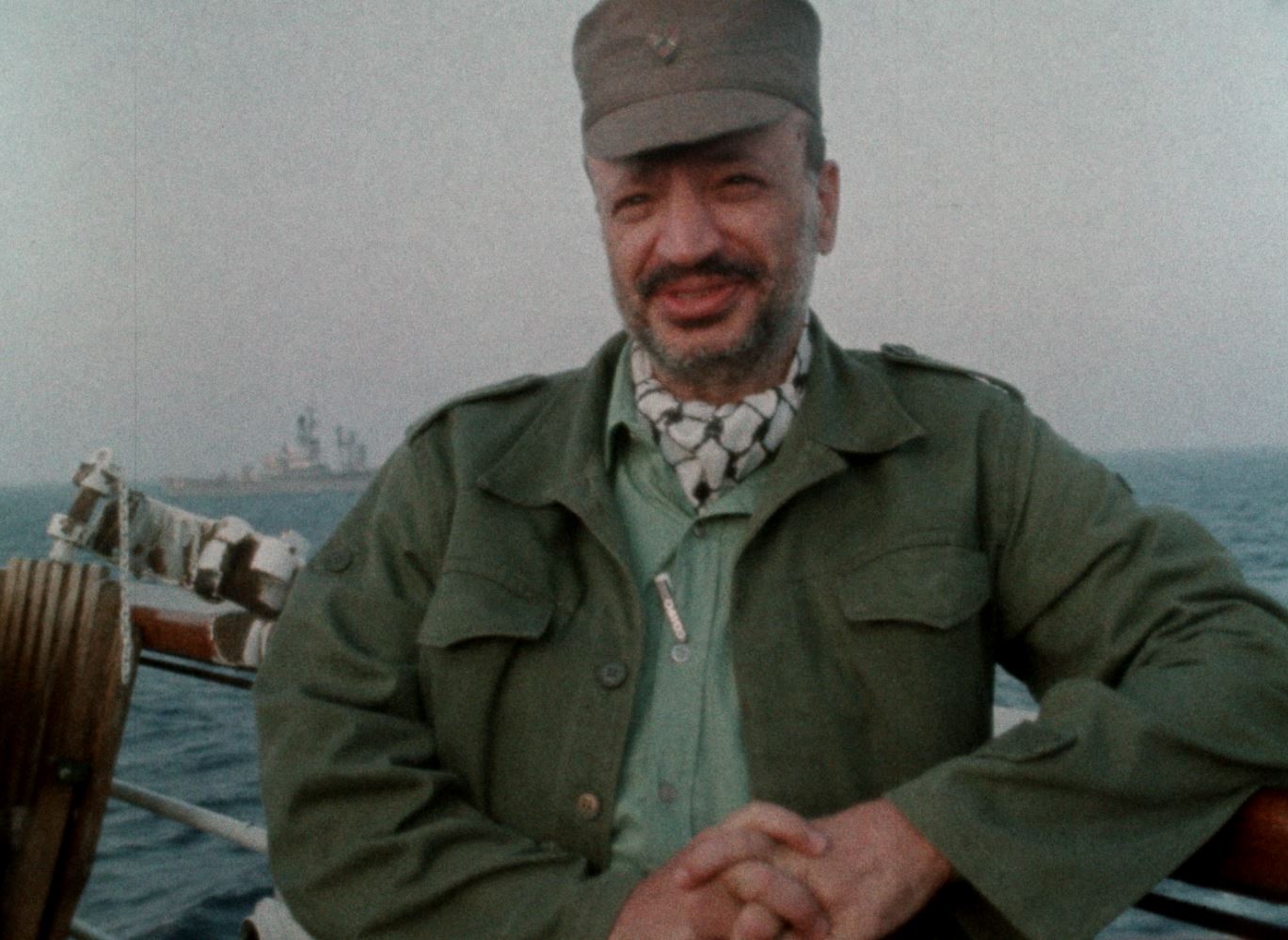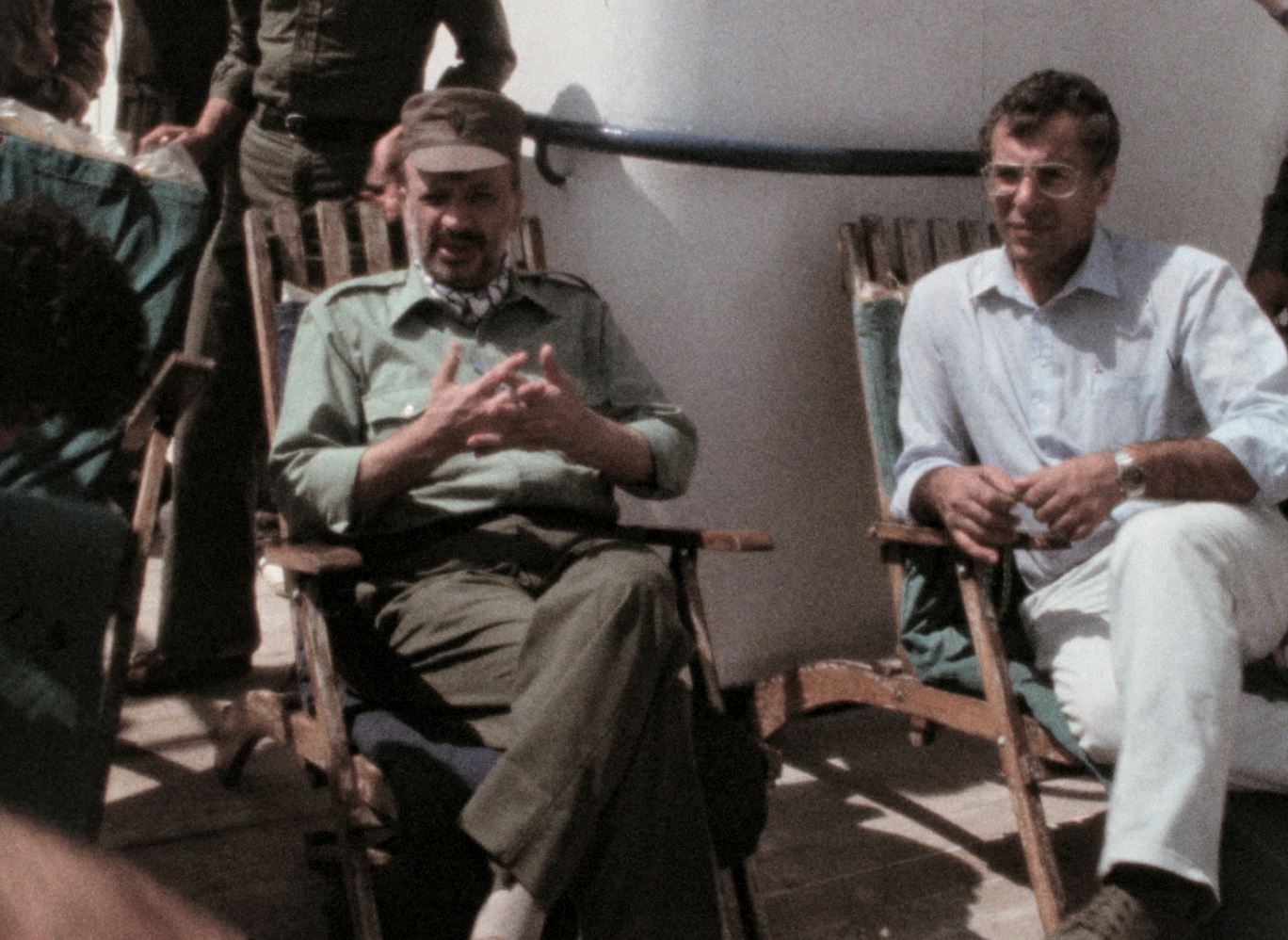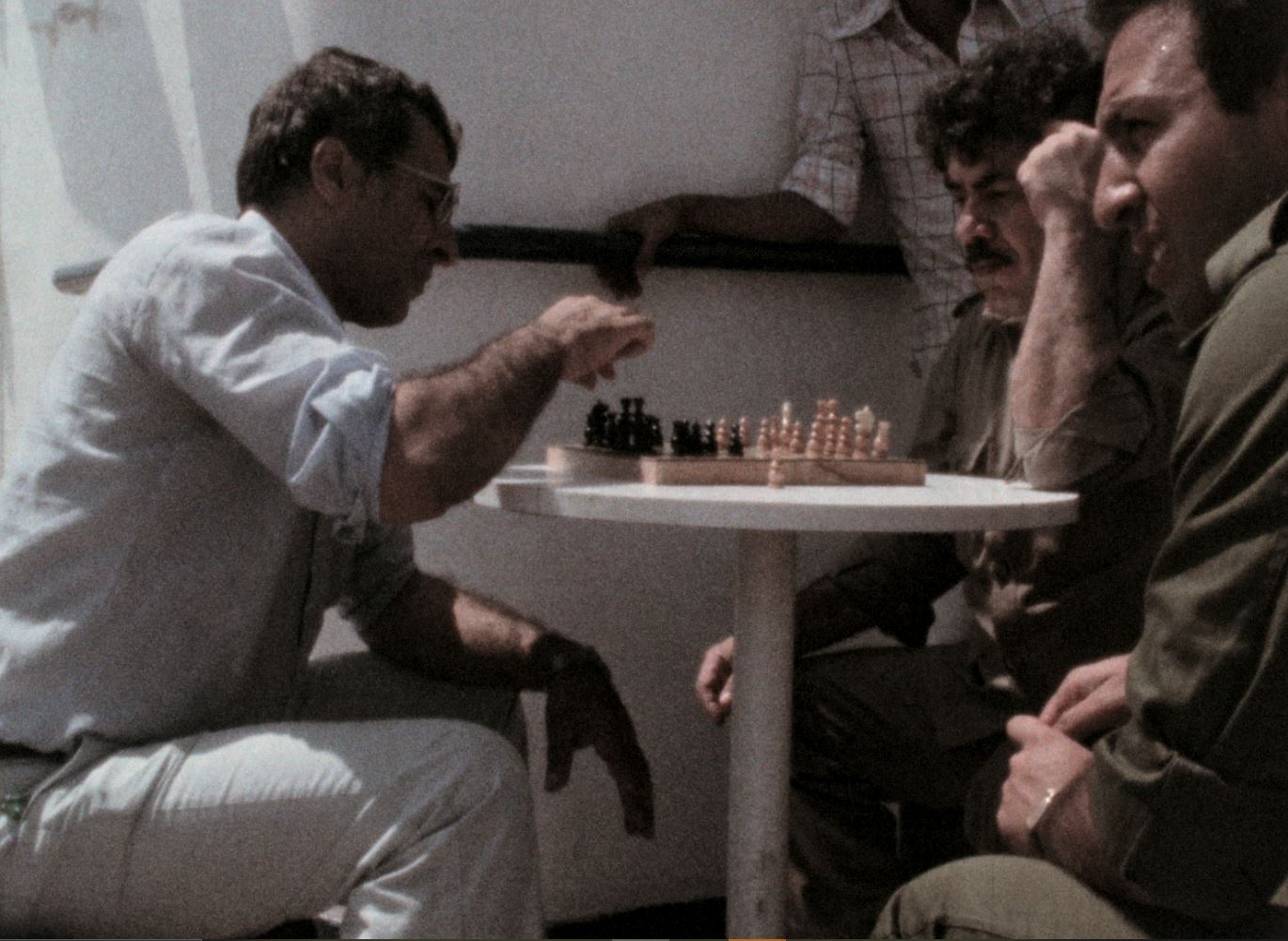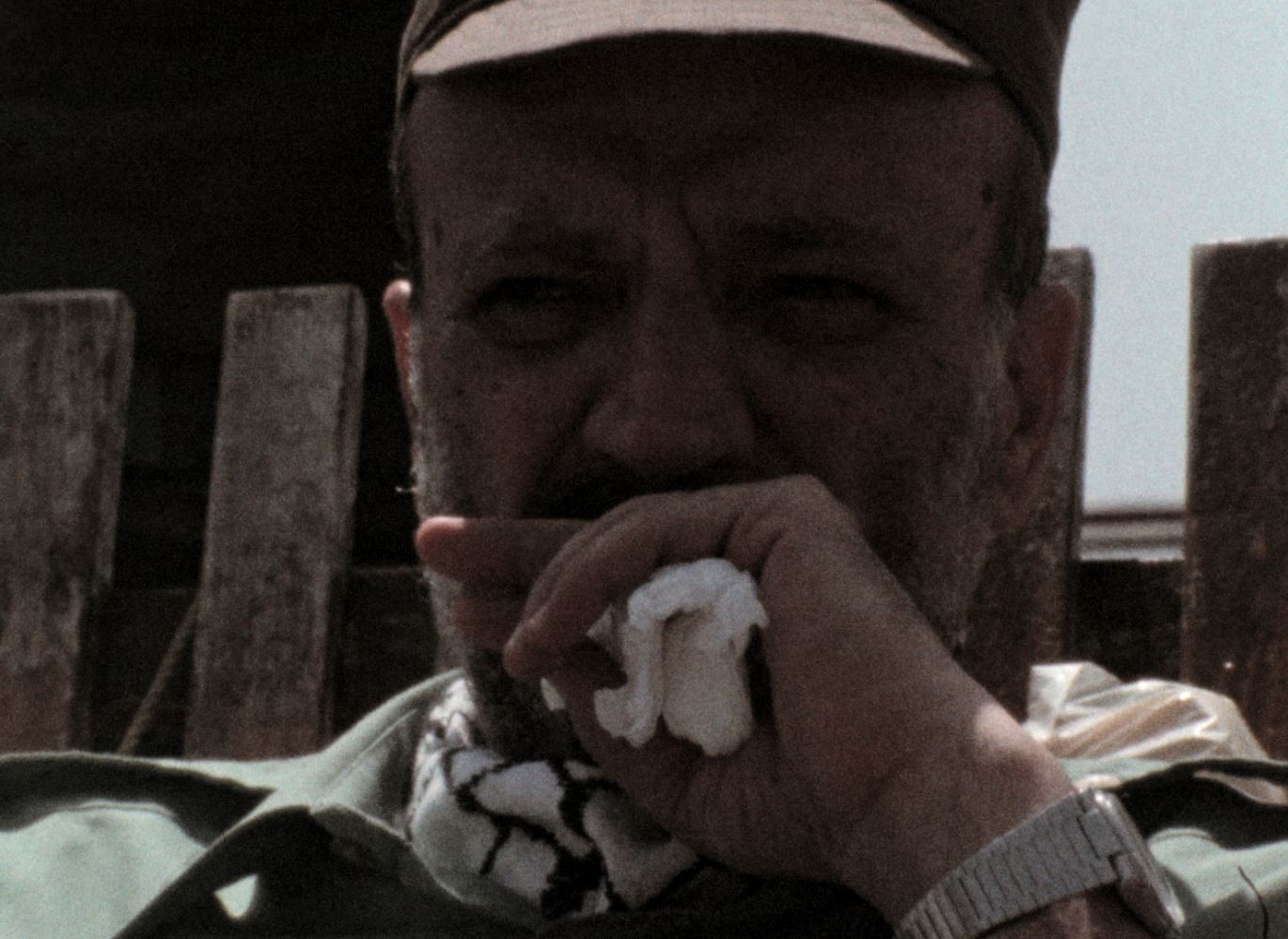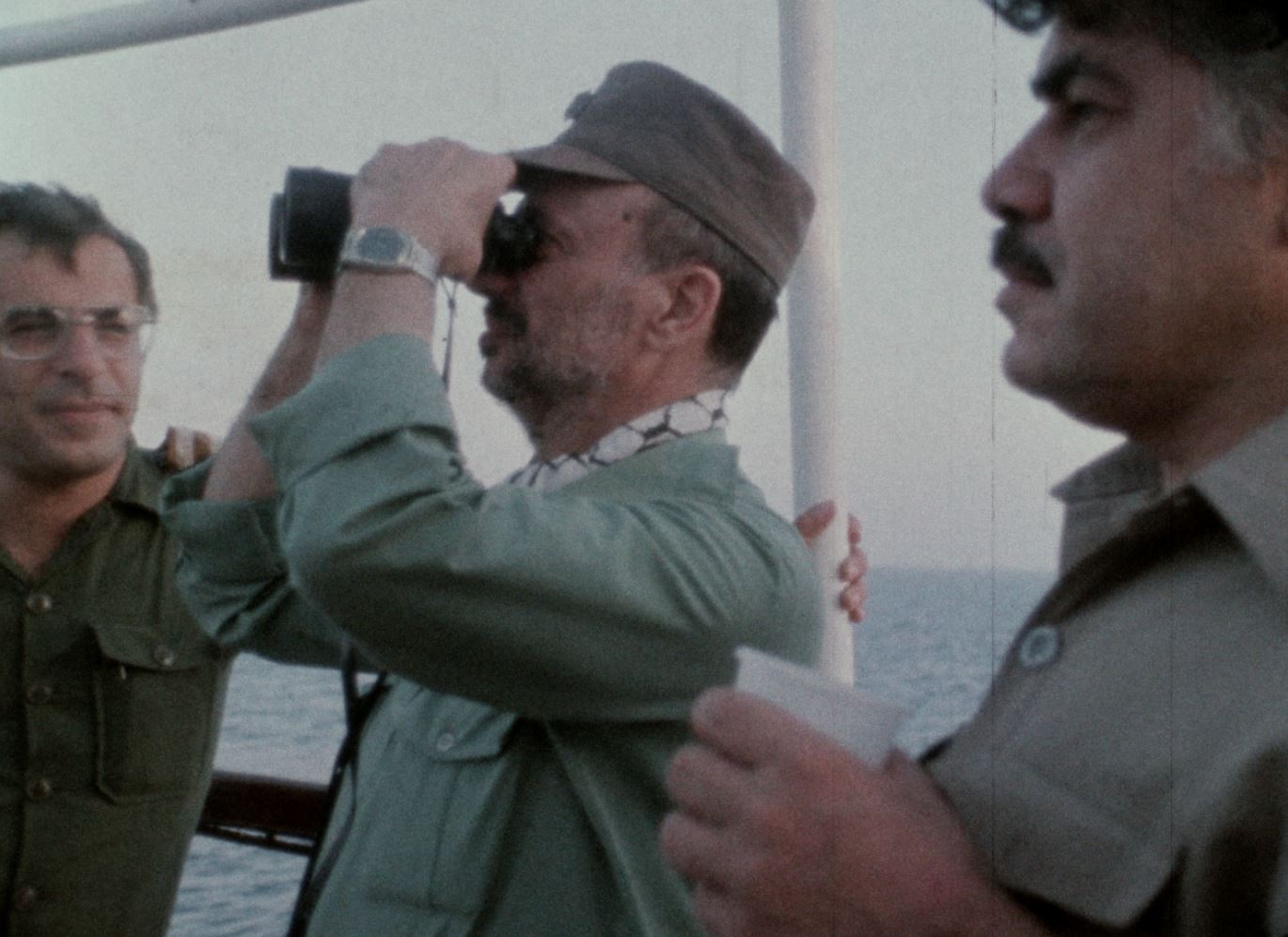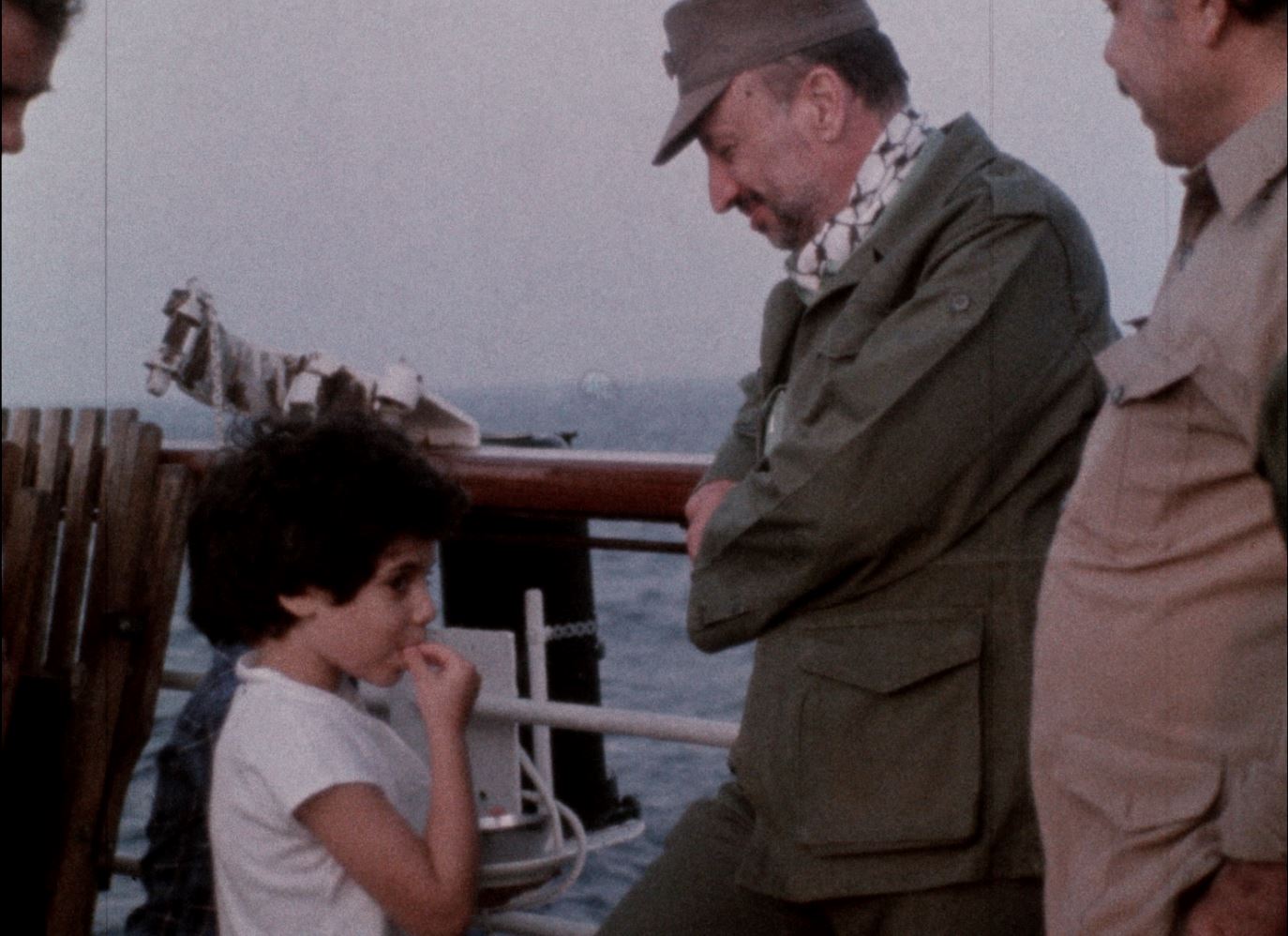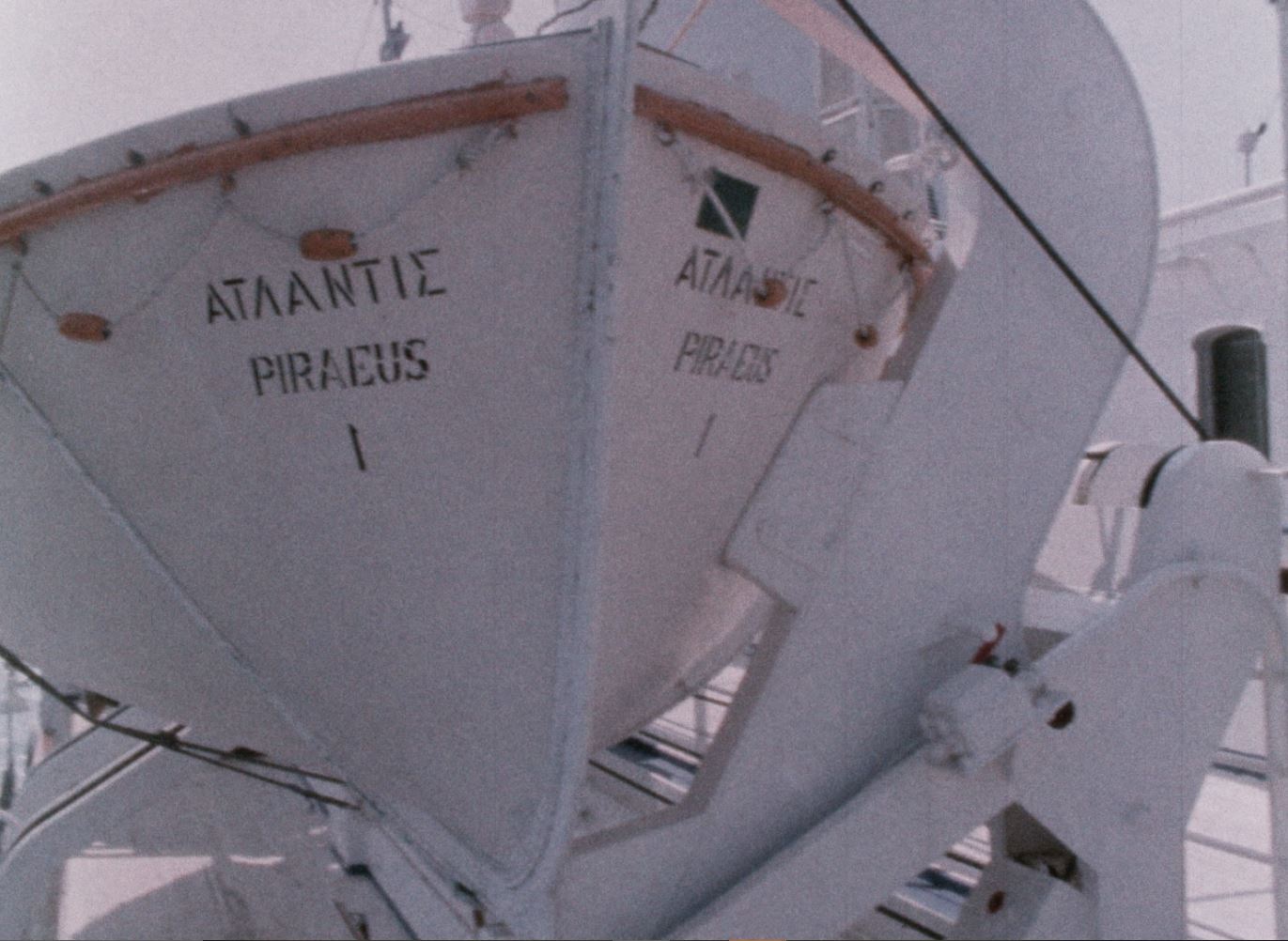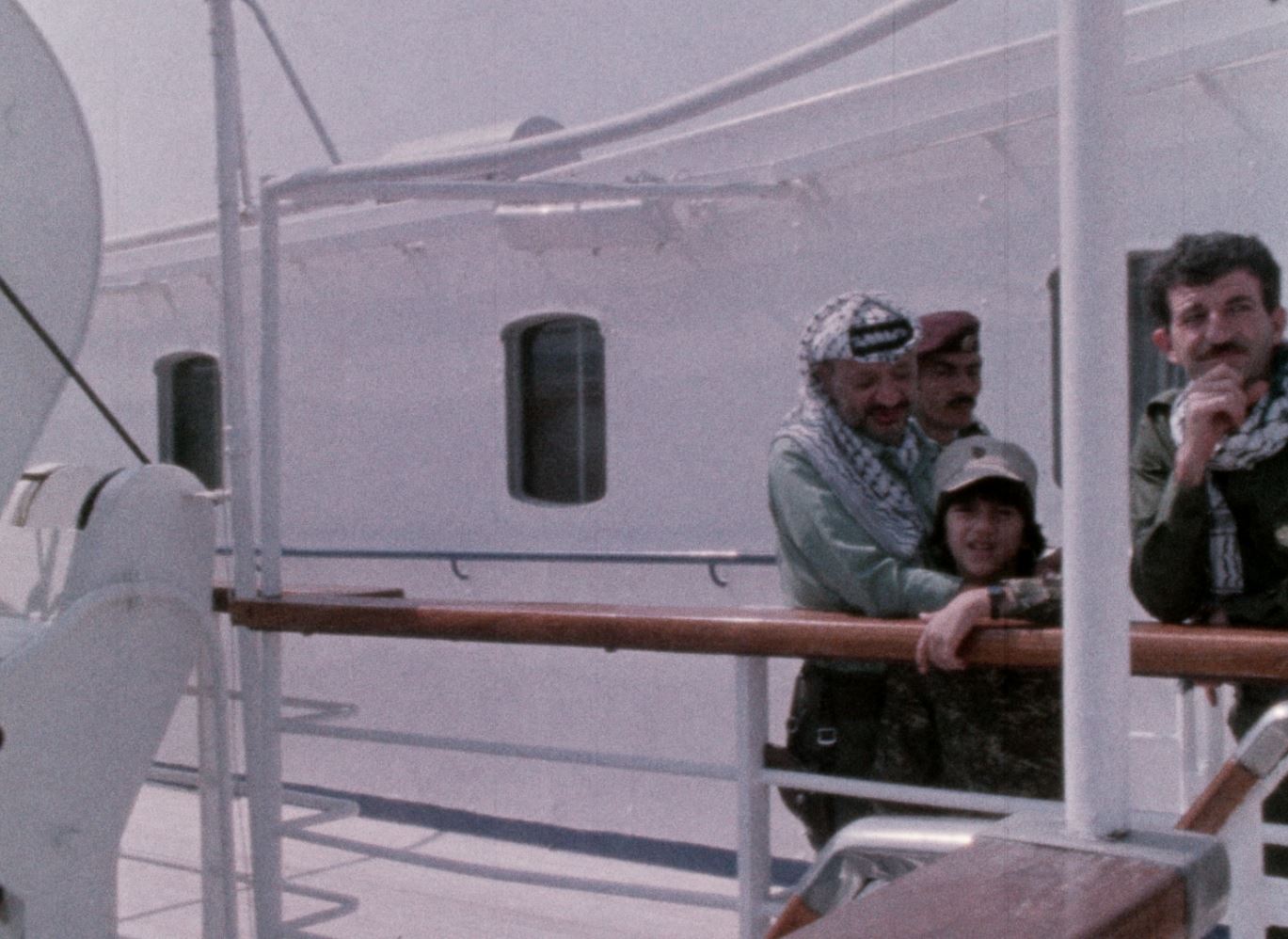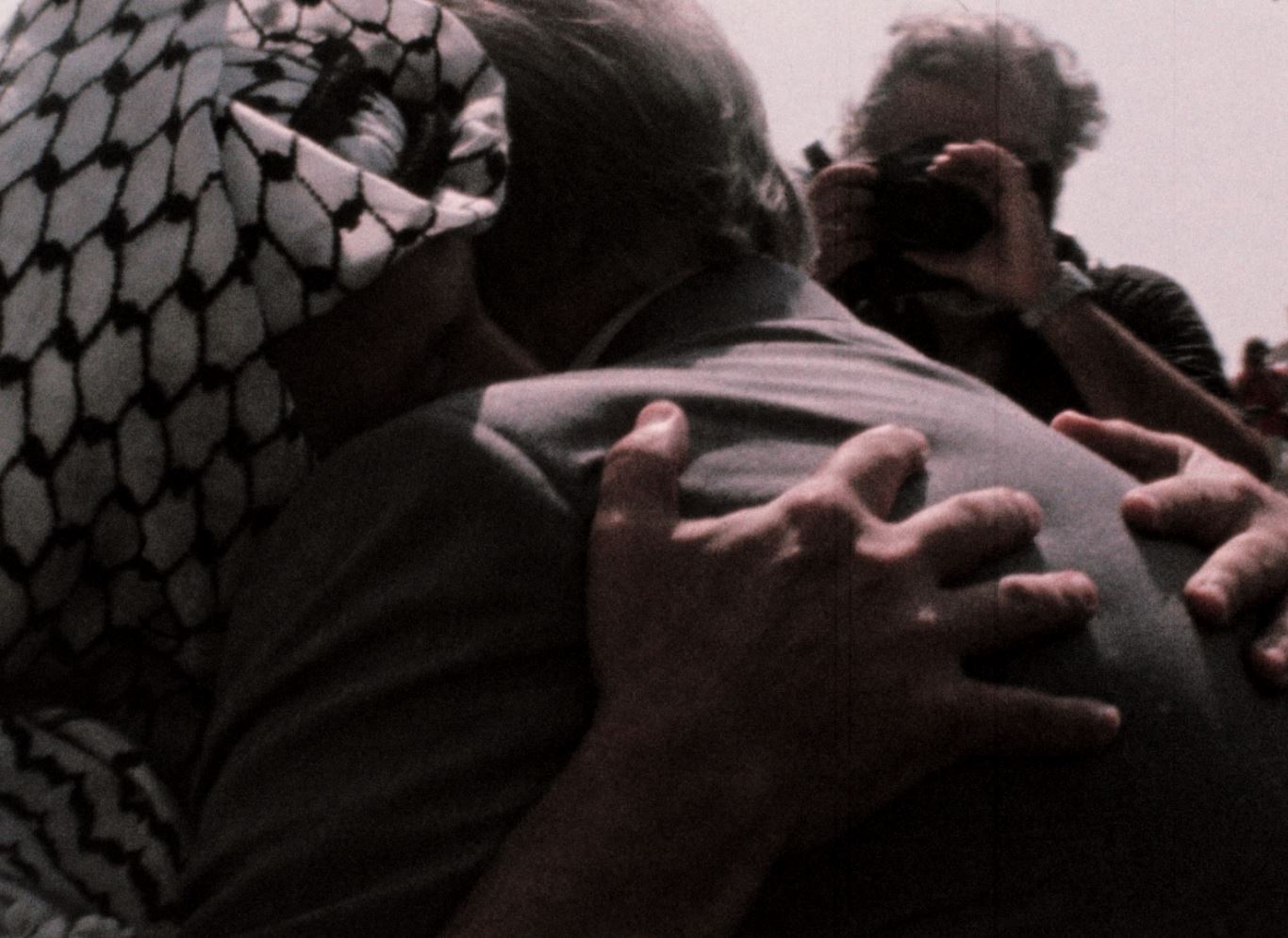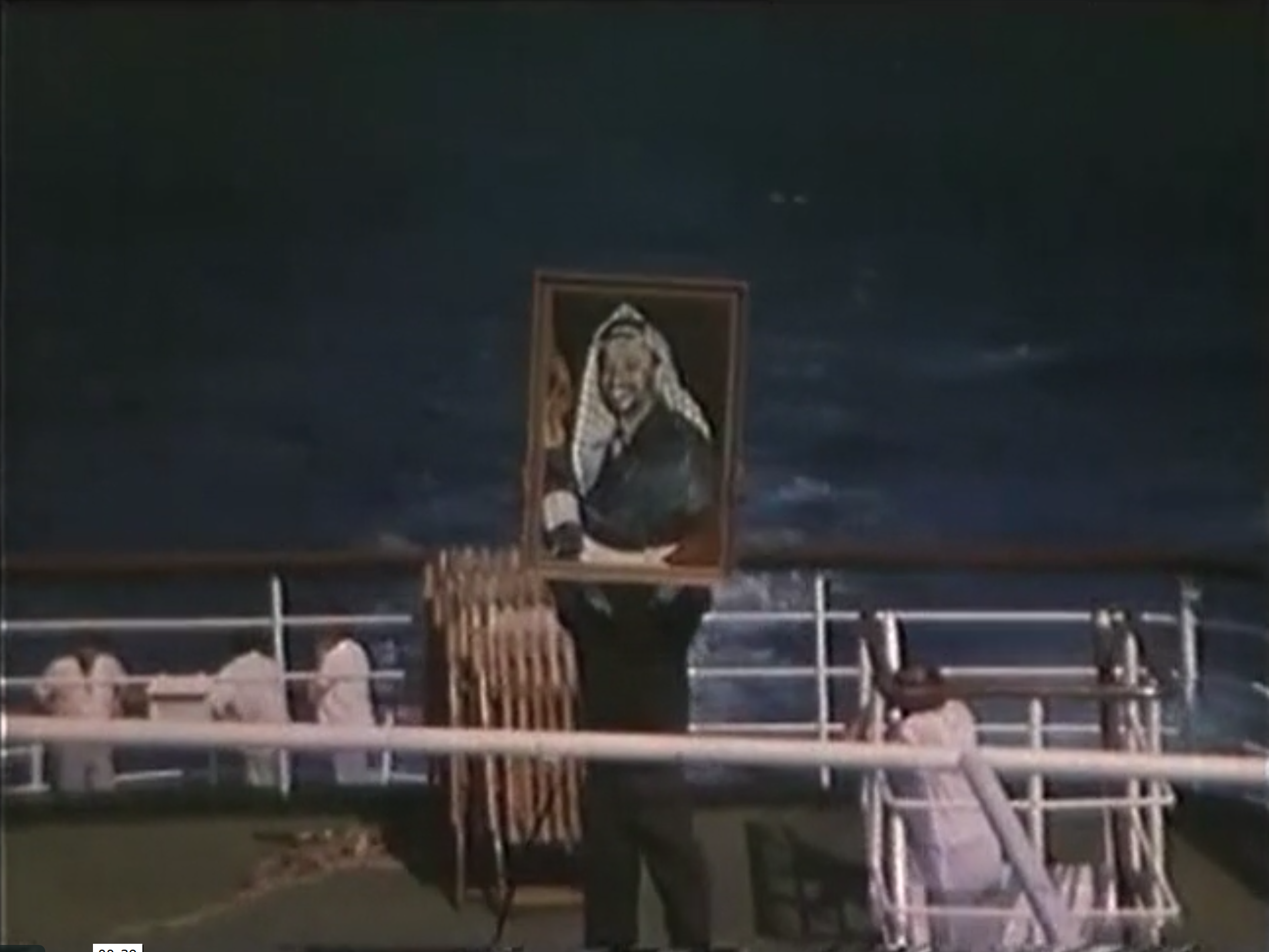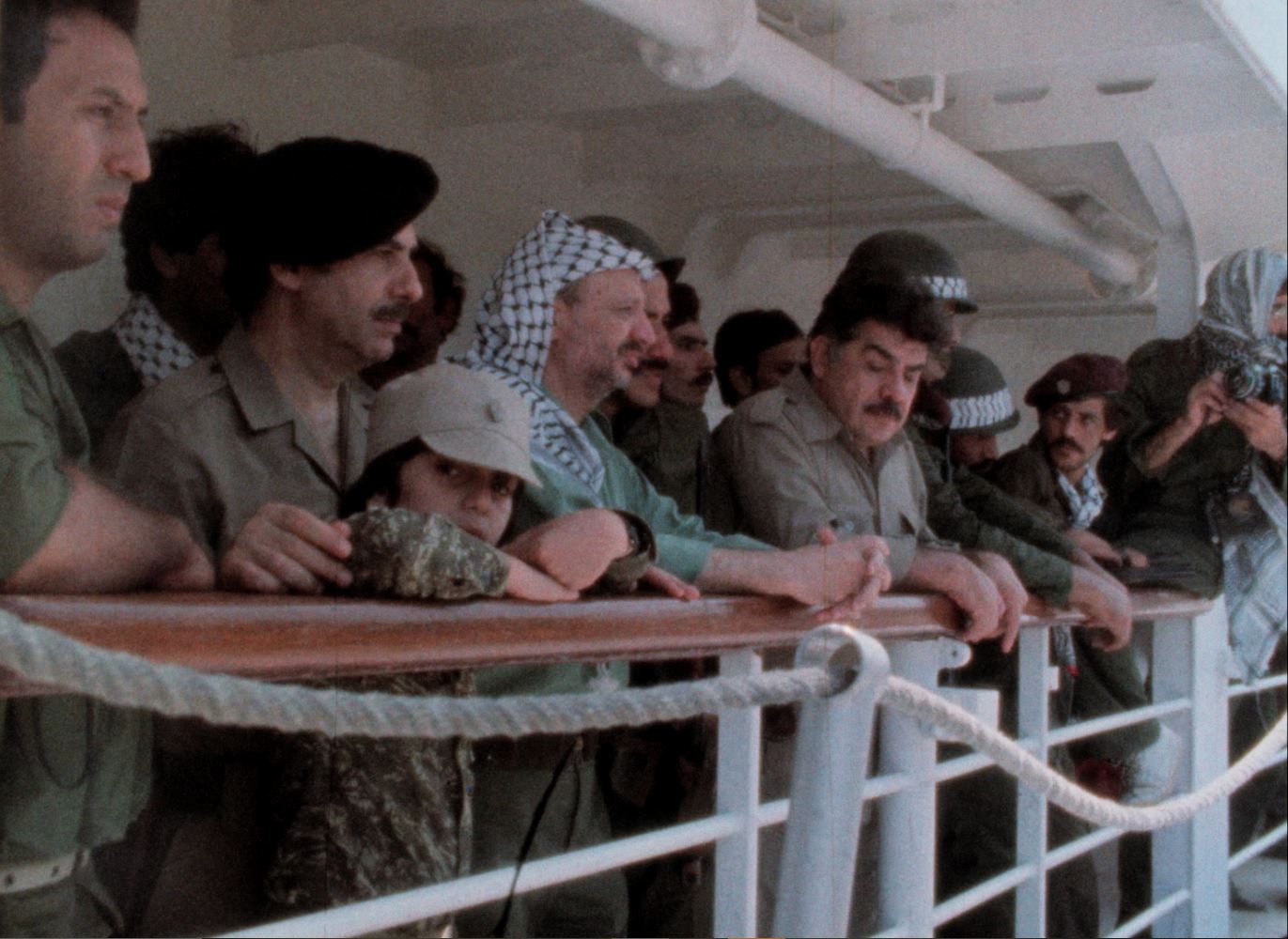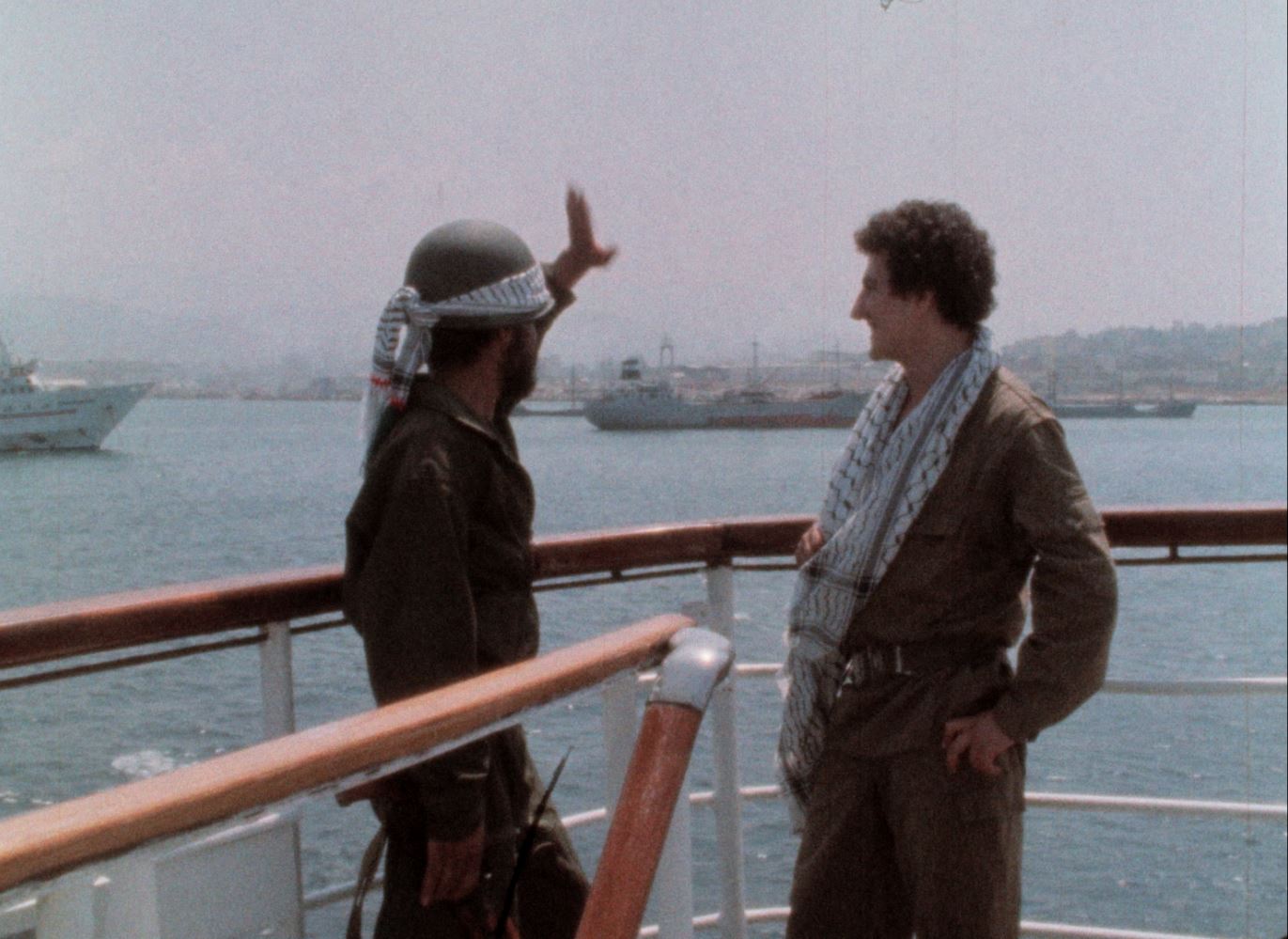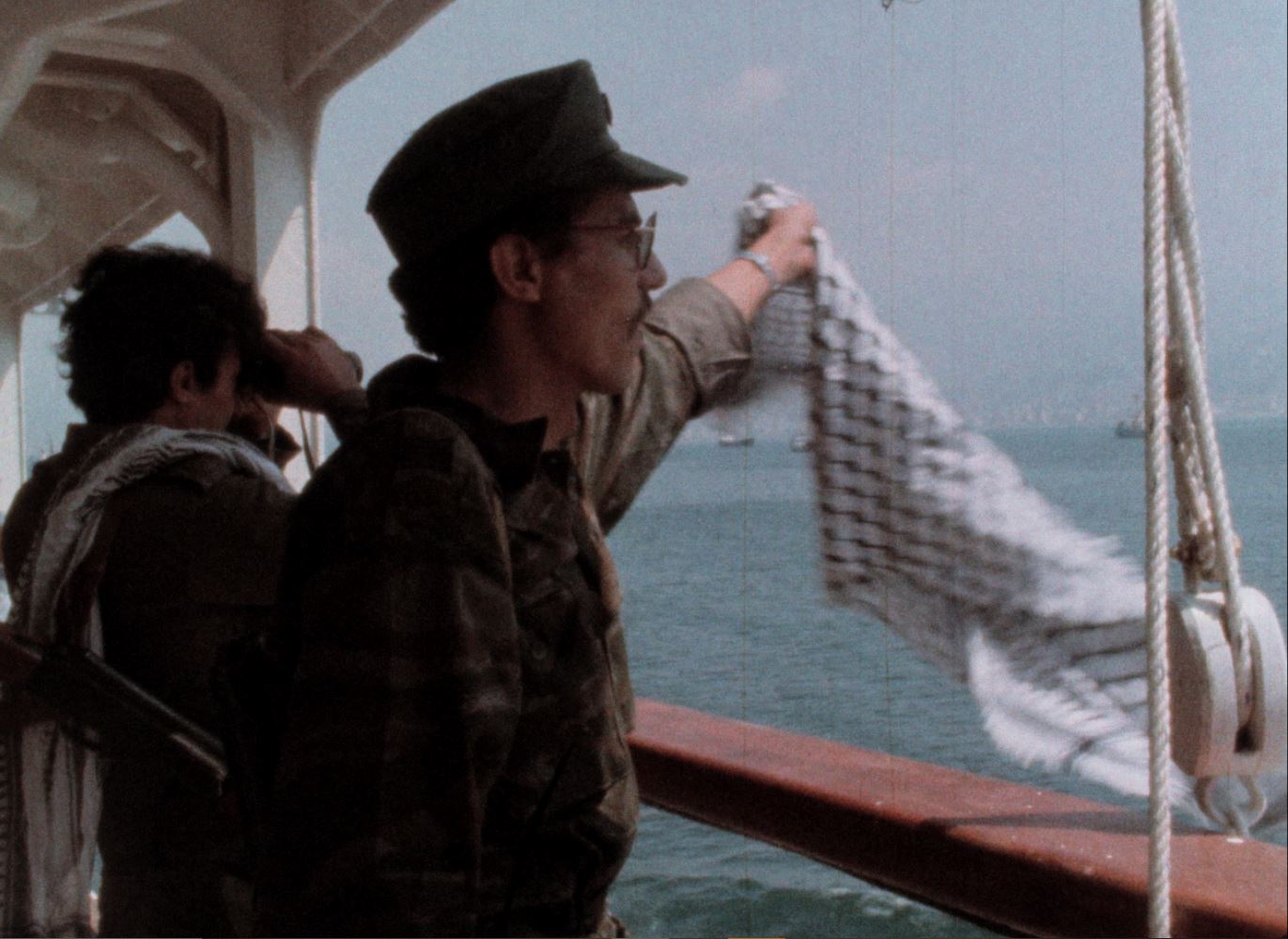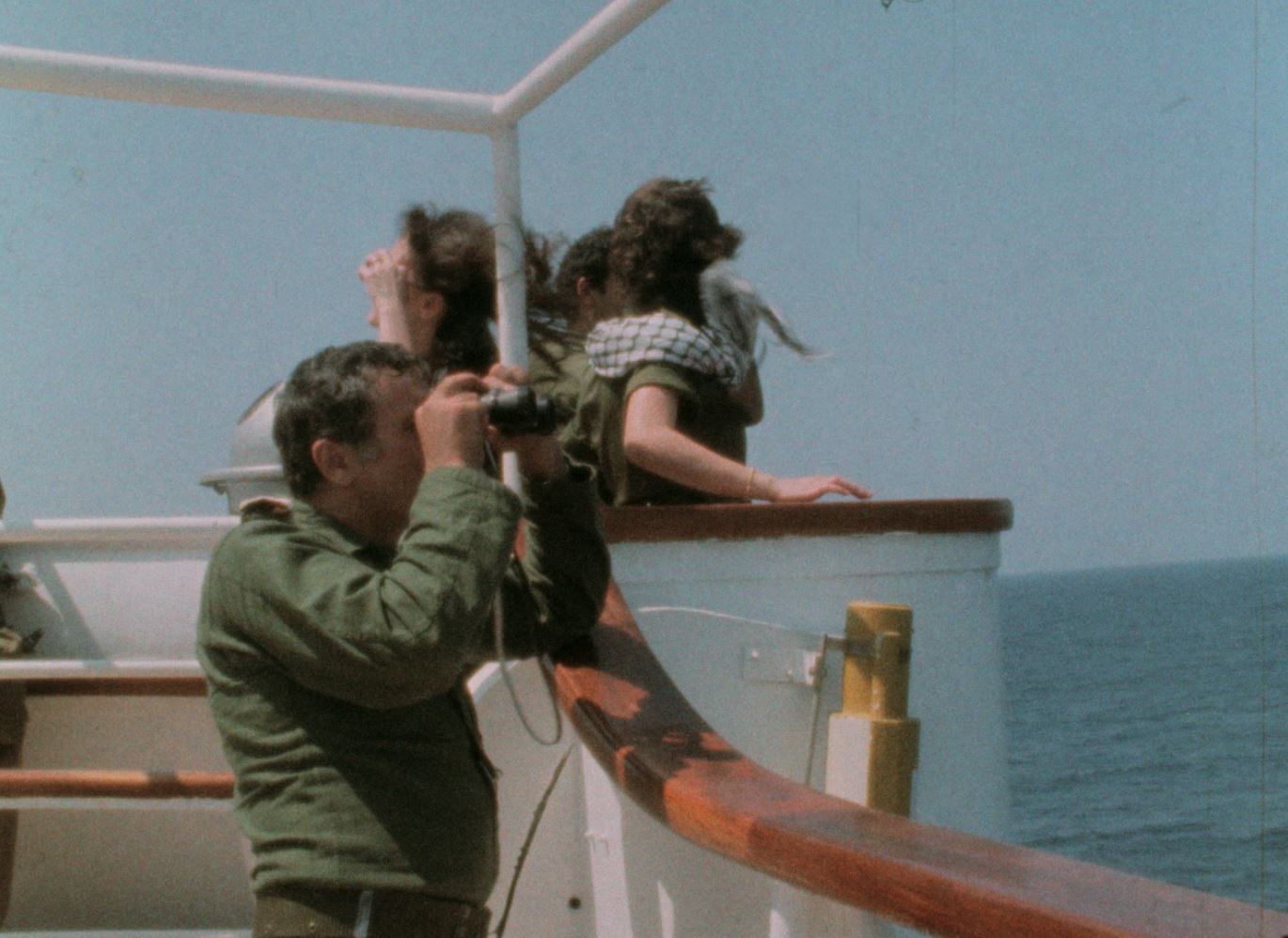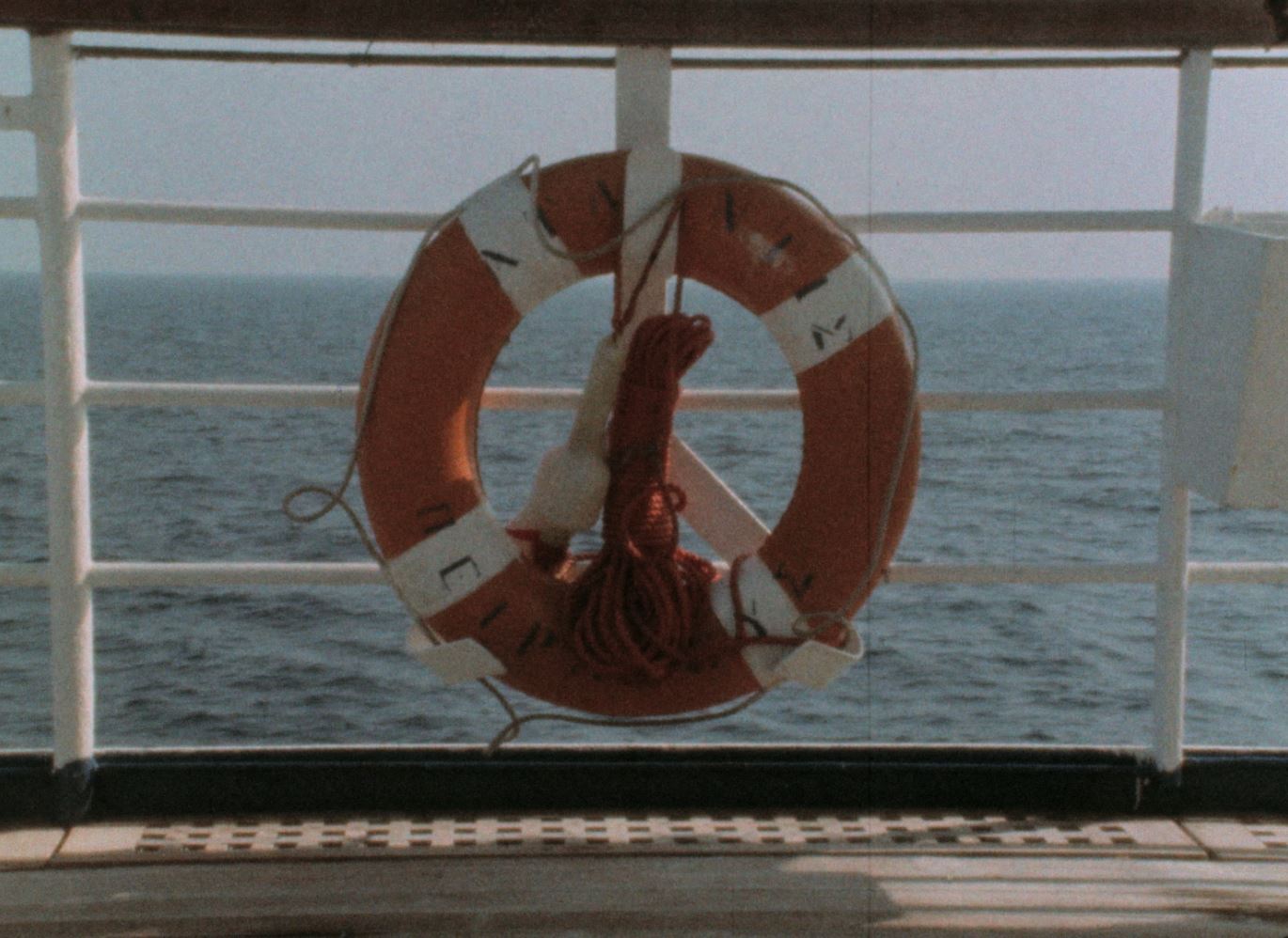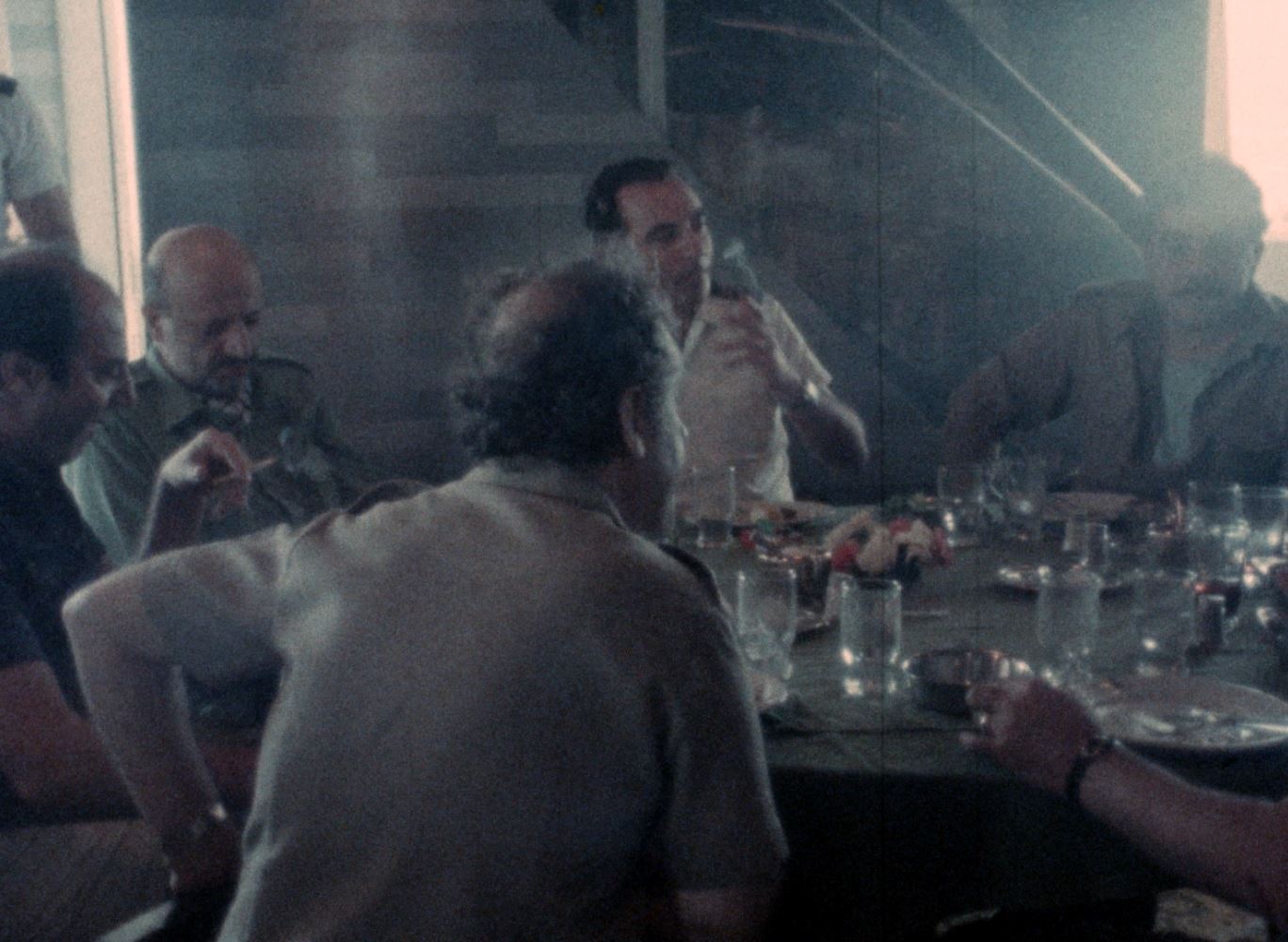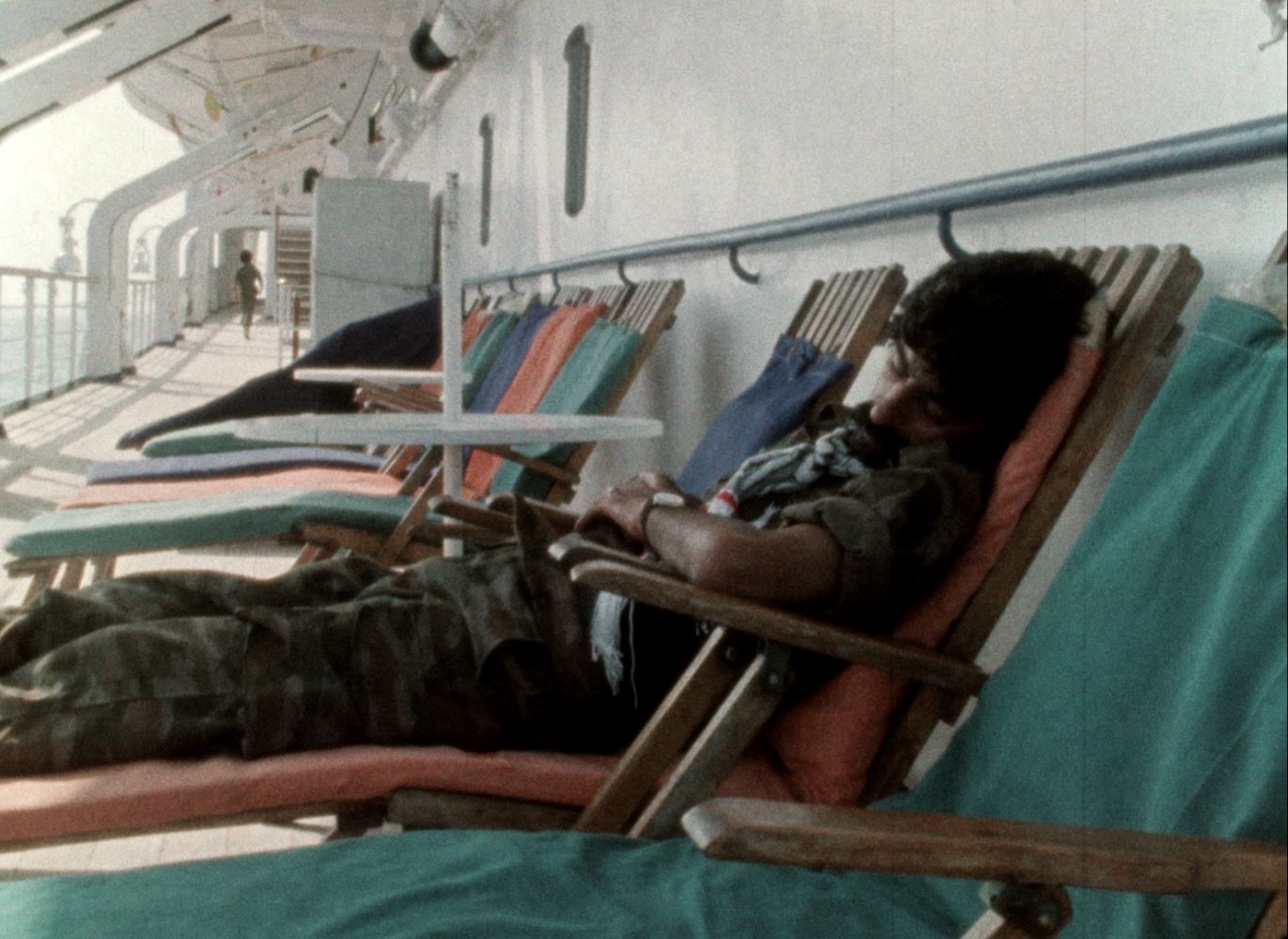This film has recently been restored.
This restoration was made from a 2K scan of the original 16 mm reversal positive work copy and the
16 mm magnetic sound preserved at the French Film Archives.
Image and sound scan: Jean-Philippe Bessas
Image restoration: Nadim Kamel
Sound restoration: Monzer El Hachem
Color grading: Chrystel Elias – Lucid Post
Coordination, production: Mathilde Rouxel, Jinane Mrad – Association Jocelyne Saab
Available versions: French version – subtitles: French, English, Arabic, Spanish
After living clandestinely in Beirut to escape the Israeli forces, the head of the PLO, Yasser Arafat, leaves Lebanon aboard the Atlantis for a new exile in Greece and then Tunis. He talks about his destiny and the future of the PLO.
Jocelyne Saab’s word…
Statement of intent
In 1973, I was on my way back from Libya. Jean-Pierre Rassam was the producer of Portrait of Gaddafi, Jean-François Chauvel had spoken to him about the way that I had been working in the desert. Jean-François tells me that Rassam would like to make my acquaintance.
We met one afternoon. Jean-François, having seen me in action, couldn’t at all have imagined that I was really very shy. I find myself on the set of a studio, the spotlights in my eyes. Sat facing me were Jean-Pierre Rassam and Godard, which had the effect of intimidating me even more.
Jean-Pierre tries to make me talk about my experiences in the desert. I didn’t understand very well. I had succeeded at directing Gaddafi very spontaneously, the way one directs an actor. I had felt that I could and so I did. But at the time I didn’t have the distance I needed to know how to talk about it.
Jean-Pierre gets up and tells me that it seemed to him that I took Gaddafi by the arm, told him to fix his gaze in a certain way, to move, to walk about etc… I didn’t understand yet the excitement of Jean-Pierre, who had clearly already seen the rushes…
Not knowing what to respond, I turn to Godard and say to him: “the Palestinians are asking where you are up to with the film that you shot in Jordan”. Godard had put these images to one side, and it’s only much later that he finished Here and Elsewhere. Of course, Godard didn’t respond. I didn’t know that it was my friend Elie Sambar who had accompanied Godard during his shoot in Jordan.
Later, I asked myself if they had filmed me that day.
They were both having fun. I felt as though before me I had two thieves. I never found out if they had filmed me or not. Jean-Pierre Rassam often called me at the beginning of the Lebanese Civil War because his parents lived in Beirut and, sometimes worried, he wanted me to go and see if everything was alright. If they were still alive in their house.
Jean-Pierre died quite young and I lost all contact with him.
Later, when I saw Godard’s film at Cannes I understood that he had seen my film, The Ship of Exile. Elie confirmed this for me.
Jocelyne Saab
